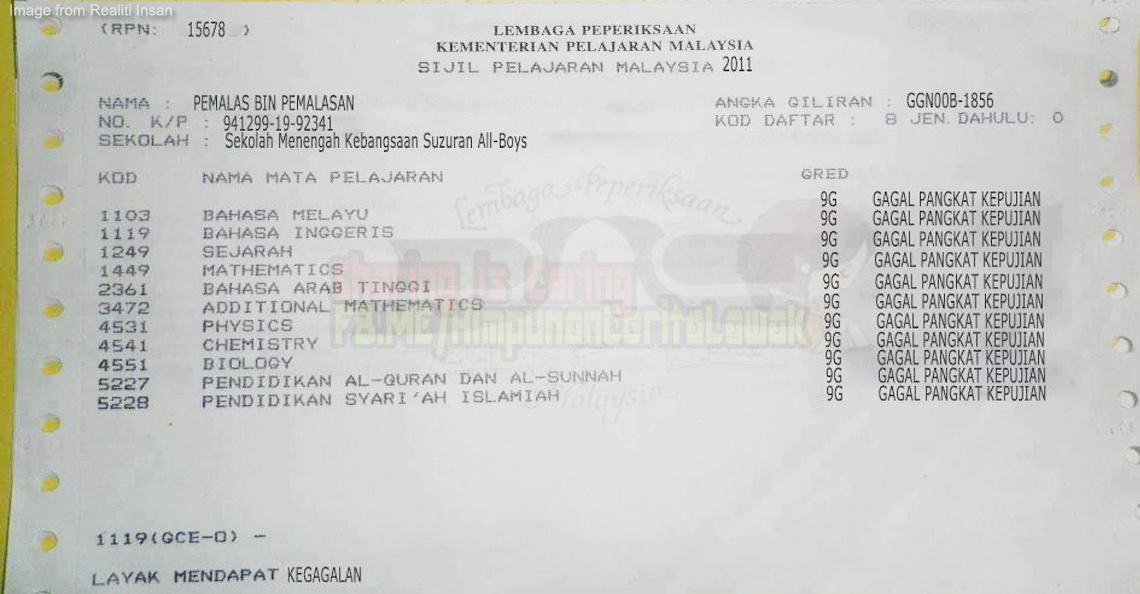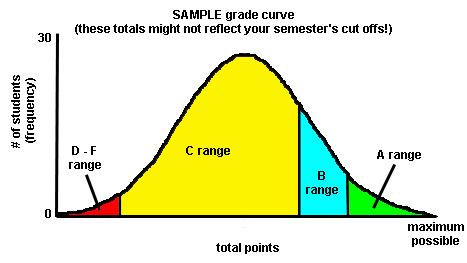OMG, SPM is so secretive, it’s even filed under OSA… but why?

- 624Shares
- Facebook442
- Twitter23
- LinkedIn21
- Email20
- WhatsApp118
Ah, it’s the SPM season again and students may feel pressured to do their best to make their parents proud of them.

This writer could still remember a piece of advice she received from her headmistress. Her headmistress advised that while it may be difficult to get straight A’s, it may also be difficult to fail SPM. Alright, we get how ridiculous this advice may sound like especially when you’re sitting for the exam itself but let us tell you this: this may be true. One CILISOS staff actually faced this.
“I did half of my Add Maths paper and left the other half blank but I still got a C- for it.” – CILISOS staff
Some of ugaiz may relate to this situation. So, we tried to dig in deeper as to how SPM grading system works but we found out that…
Not even the teachers who mark SPM papers know how the grading system works 😮
We contacted a few teachers who have experiences in marking SPM papers. Out of all the teachers we contacted, only one teacher explained how the process goes.
“Teachers who mark SPM papers don’t know anything about the grading system cos the grading is made by Lembaga Peperiksaan Malaysia (LPM). We are only requested to key in the marks.”- Cikgu M told CILISOS.
Wait what? Before we go further on why SPM is such a huge secret, we also found out that two policemen were reported to have been involved in an accident that claimed their lives recently. They were escorting SPM 2018 papers from Bentong to Kuantan.
Eh, why were the policemen escorting these papers? Don’t they have better things to do?? Apparently, the Ministry of Education (MOE) took several steps to increase the security level of SPM papers so ugaiz won’t get soalan bocor la. Police were actually involved in the entire process from the preparation of question papers to the examination hall.

Some of the measures taken by MOE to tighten the security level of SPM papers were by increasing police escorts accompanying the vehicle to transport SPM papers to all examination centres and ensuring that key holders don’t know the lock number combination of the vaults that keep the papers.
And didja know that all strongrooms, where examination papers are kept, are equipped with CCTVs as well. Wah, the gomen dam scared after the UPSR soalan bocor case that they started installing these CCTVs in these rooms.
Just in case you don’t know, the grading system and SPM questions fall under the Official Secrets Act 1972 (OSA). No, it wasn’t clearly stated or listed that SPM grading system and questions fall under this act and, if ugaiz have read this act, you may find how vague and broad the act is.
But we won’t be explaining more of this today since we’ve explained it before. Or if you want more detailed info on this act, ugaiz just read it here la.

Some netizens predicted some reasons as to why SPM grading system is a secret. A social media user named Abasir commented that public knowledge of marks and grades would:
- cause an outcry of among minorities
- shame the regime and its prove critics right
- cause all foreign institutions to refuse admission to local school leavers
- bring the country into universal ridicule, among other reasons.
Yikes! So, we got in touch with LPM to find out the real reason as to why the SPM questions and grading system are placed under OSA.
“According to Education Act 1996, the secrecy of examinations is stated as one of the Director of Examination’s function.” – LPM to CILISOS.
Huh, it’s such a national secret that even LPM could only give that statement to us. But that’s not the only thing LPM told us. Apparently…
Bell curve grading may NOT be the only system used to grade SPM papers!?
While researching for this story, we can’t help but to notice how Malaysians are commenting on the passing grades of SPM. Some leaked passing grades online while others came up with their own theories such as the famous bell curve grading.

Yes, we’ve written something about this a while ago when PMR changed to PT3. In that article, we explained how bell curve grading works. Generally, bell curve grading works in such a way that letter grades in any given class would be distributed along a bell curve. So, for instance, if an SPM paper is scored, the average score automatically becomes an average grade (typically a B or C).
And we also pointed how this is the public’s assumption toward the grading system of Malaysia’s public examinations. As a matter of fact, an educationist from Universiti Kebangsaan Malaysia, Teo Kok Seong, agreed to this assumption.
“Grading would be “dynamic” in the sense that it would vary according to the average performance of students.” – Teo Kok Seong for FMT.

However, LPM told us that it uses a standard fixing method when grading SPM (and other public examination) papers which is also allegedly used by other countries around the world.
“The statement about how passing grade changes every year isn’t true. Standard fixing method determines the level of competency of a candidate or student.” – LPM shared with CILISOS.
Usually, the final grades which students obtain for any public examinations are decided by either the Malaysian Examinations Syndicates (MES) or Malaysian Examinations Council (MEC), depending on which examination a student sat for. During the marking process, three meetings would be held between the examiners and chief examiners to ensure that the papers were marked fairly.
Apparently, Malaysia uses both norm-referenced and criterion-referenced approaches when marking public examination papers. Wadaheck are those??
Have ugaiz seen those height requirement before riding roller-coasters? A criterion-referenced approach works somewhat like that, which means students are graded according to a certain criteria. While norm-referenced approach works like the bell curve grading.

But back to standard fixing method, LPM told us that three main aspects – criteria, norm and trend – are used to determine the cut-off scores (passing grade, which is a secret btw) and raw scores (the scores you actually get).
And we found out that standard fixing method has been covered a while back. If that’s the case, then…
What’s the fuss on SPM grading all about?
Most Malaysians such as Parents Action Group for Education (PAGE) and YB Nurul Izzah urged the gomen to be more transparent in grading SPM papers. Their concerns were on how students’ real achievements can’t be evaluated thanks to this secret.
However, we found out that you can actually check the performance of students yearly based on a section on LPM’s website. It is called Kupasan Mutu Jawapan (analysis on the quality of SPM answers) where LPM discusses the quality of answers by students each year.
LPM divided candidates’ performances into three groups: candidates who scored high marks, with average performance and who scored low marks. LPM also discusses the general performance of candidates in each groups based on candidates’ answer scripts. Yeap, like the real, REAL answer scripts.

Ugaiz can know more by clicking the image butttt LPM mentioned that documents under Kupasan Mutu Jawapan can only be re-published for education purposes. So, do be wary when sharing these documents okies?
Speaking of quality, we also found out that Malaysia uses the expertise from other countries in making sure that the grading system we have is at par with international standards.
And while other people are concerned with the transparency of SPM grading system, most parents may only be concerned with how well their kids do in SPM. So, while getting straight A’s may seem like a dream, getting a straight E’s (or G’s, in the Malaysian context) may be pretty impossible.

At the time of writing, SPM candidates may be in their third week of examination but we still wanna wish ugaiz good luck for the remaining papers you will be sitting for. 🙂
- 624Shares
- Facebook442
- Twitter23
- LinkedIn21
- Email20
- WhatsApp118



